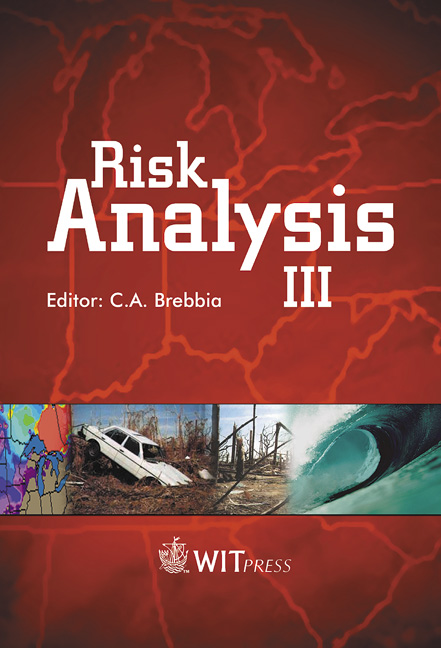The Need For A Coastal Estuary/inland Flood Risk Damage Potential Index
Price
Free (open access)
Transaction
Volume
31
Pages
Published
2002
Size
704 kb
Paper DOI
10.2495/RISK020551
Copyright
WIT Press
Author(s)
L. J. Pietrafesa, L. Xie, E. Buckley, D. Hildebrand, M. C. Peng & D. Dickey
Abstract
The present tropical cyclone intensity scale is based on wind-damage potential, which is derived from a wind-engineering approach. The damage potential to fixed structures at different wind speeds and wind energy were analyzed and used to assign the intensity of tropical cyclones. On the offshore side of coastlines, because wind intensity, to a large extent, does determine the magnitude of storm surge, wind speed implicitly reflects the damage potential due to storm surge and offshore, coastal flooding. However, in estuary and inland regions, the damage due to tropical cyclones often results from a combination of wind and flooding damage. Generally after making landfall, a ‘tropical cyclone’s damage potential due to wind normally decreases but its’ damage potential due to flooding normally increases. However, the latter effect is not represented by the widely used and brilliantly conceived Saffir-Simpson tropical cyclone scale. The damage to North Carolina incurred during the passage of tropical cyclones over a 75 year period, 1925-1999 show that Saffir/Simpson scale Categories 1,2 and 3 hurricanes have accounted for 77% of, the damage and these events have also tended to be very wet. Further, we find that in general, extreme rainfall events appear to have only a weak relationship to the Saffir-Simpson damage potential scale of tropical cyclones. So we are confronted with a dilemma. Much damage due to hurricanes striking North Carolina can be attributed to flooding, yet flooding is only weakly tied to the wind intensity scale. Moreover, the flood forecasts presently being generated and used by the government are based on outdated and incomplete physical and mathematical models. So presently, flood forecast information is not readily available, is not accurate, is unreliable, and cannot be easily communicated or
Keywords





